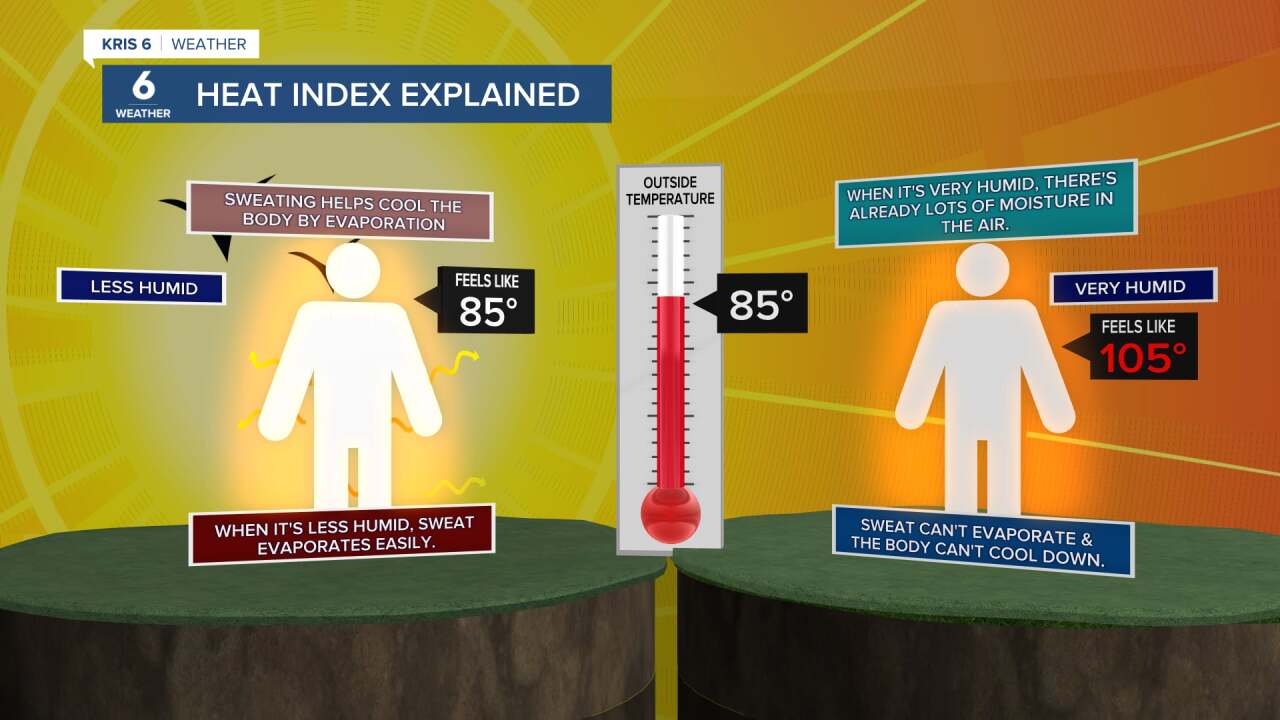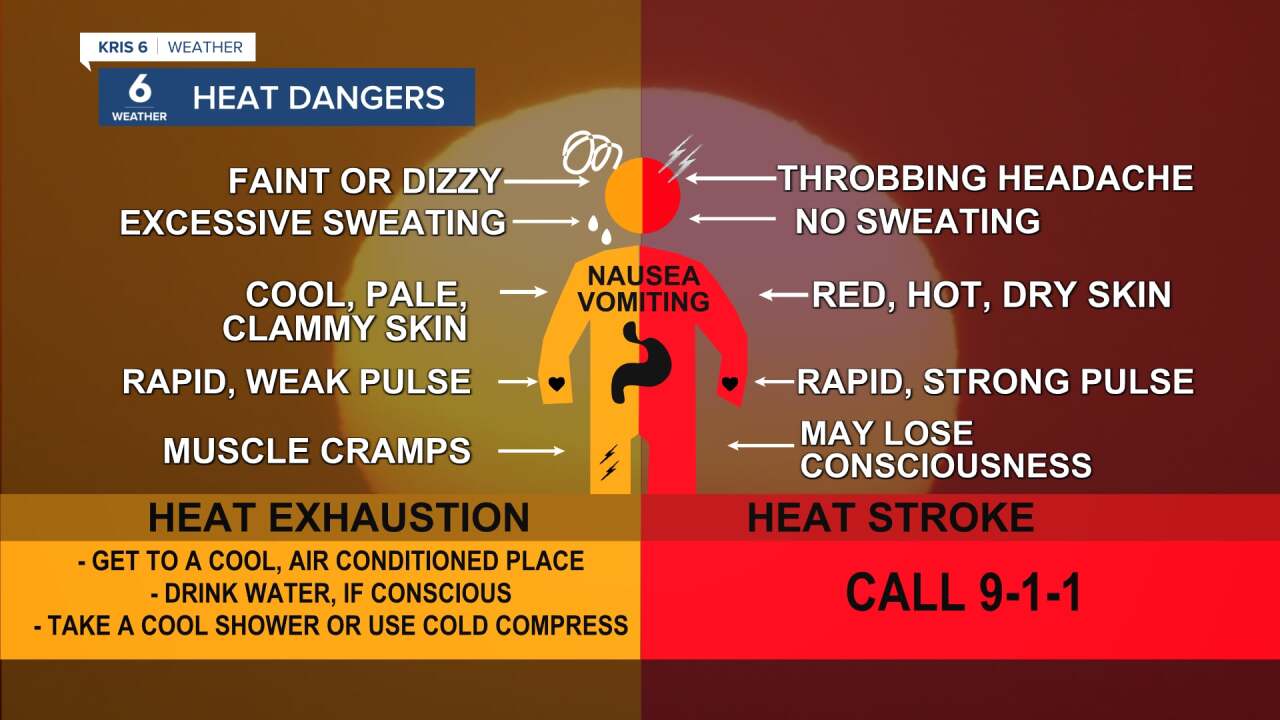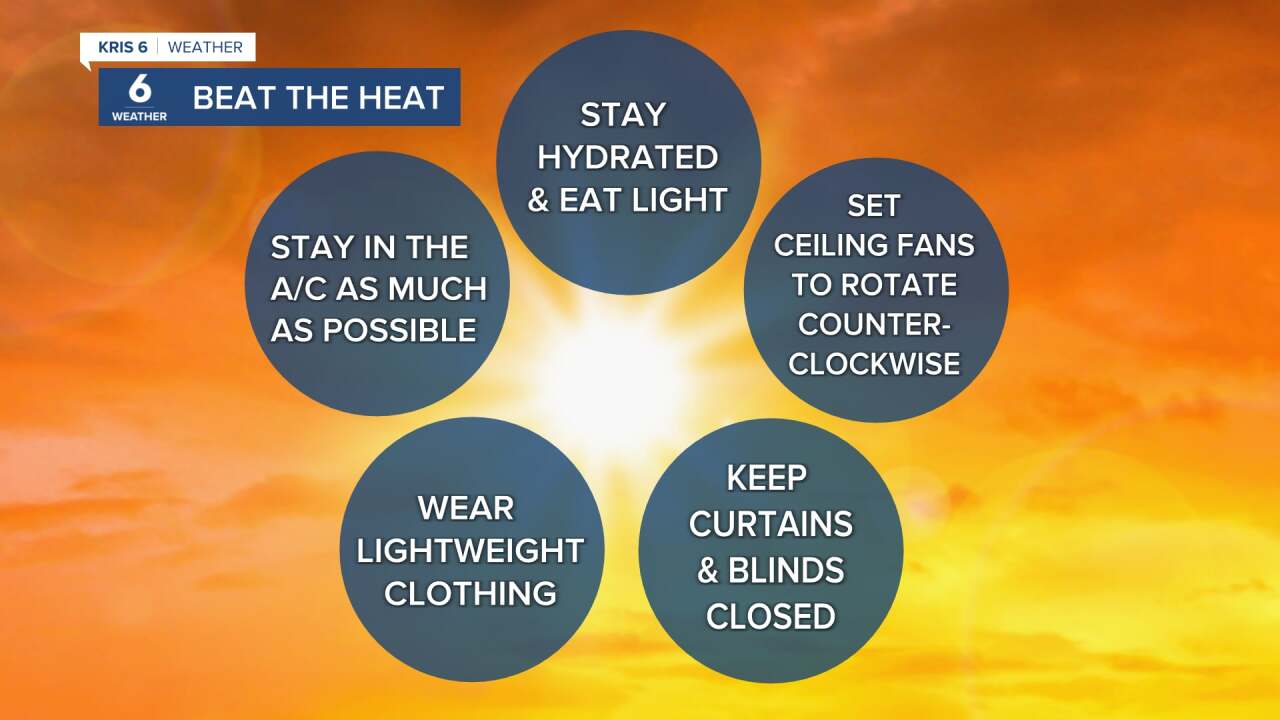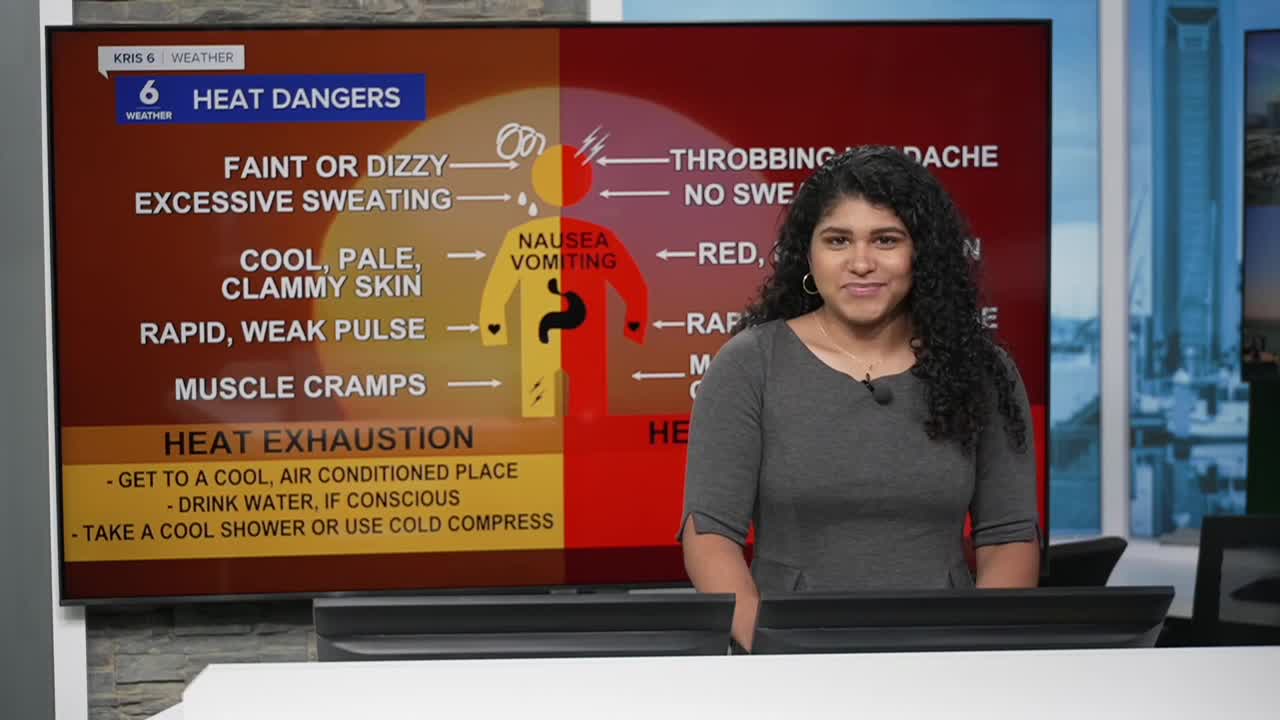Feels-like temperatures

Have you ever checked the thermometer and thought, “Why does it feel hotter (or colder) than the number says?” This is due to the feels‑like temperature—an index that combines air temperature with wind, humidity, and even sun exposure to tell you how your body actually perceives the weather.

Humid weather
In hot, humid weather, we talk about the heat index. High humidity slows down the evaporation of sweat—our body’s natural cooling system. For example, a 90°F day at 70% humidity can feel like 105°F. When our bodies can’t shed heat efficiently, we’re at risk for heat cramps, heat exhaustion, and even heat stroke, which can be life‑threatening.

Hot days
On hot days here in the Coastal Bend, it’s important to stay hydrated, take breaks in the shade or an air‑conditioned space, and avoid strenuous activity during peak heat. We typically see the warmest period of the day between 2 p.m. and 5 p.m., but warm up to 90 degree weather as early as 10 a.m. on some days.
Advisories, Watches, and Warnings
A Heat Advisory is issued when dangerous heat conditions are not expected to reach warning criteria. There are also watches and warnings in place when it comes to the heat. An Extreme Heat Watch is issued when dangerous heat is possible and you should be prepared to move outdoor activities to indoors. An Extreme Heat Warning is issued when dangerous heat is happening and or close to happening. This is where you should take action, stay hydrated, and move people and pets inside.
A Heat Advisory is typically issued when the heat index is expected to reach 105°F to 109°F for two or more hours. An Excessive Heat Warning is issued when the heat index is expected to reach or exceed 110°F for two or more consecutive hours.

Next time you check the weather, don’t just look at the thermometer—pay attention to the feels‑like value. It’s your body’s true temperature reading, guiding you to dress and plan your day for safety and comfort. Stay aware, stay prepared—and weather any condition with confidence!



